This travel wiki page of Cuba will help guide travelers with quick and relevant information to consider when planning and visiting the country. It is difficult to find all the relevant information on Cuba’s culture, safety, travel restrictions, and things to do, so we summarize it all here. If anything is stale or outdated, please let us know! Let’s dive in and explore more high-level information as a Cuba trip planner.
Last updated August 17th of 2023.
Table of contents
National Information & Culture
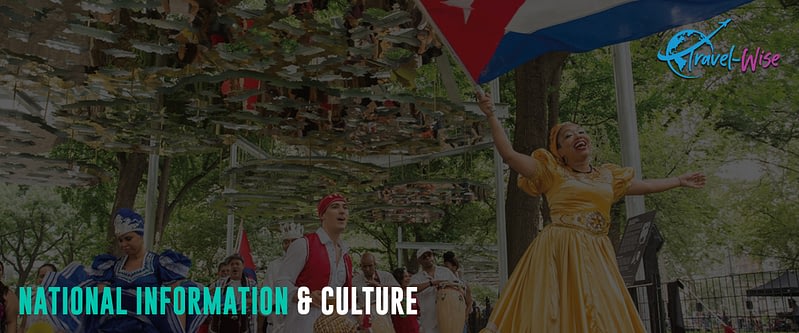
Cuba, officially the Republic of Cuba, is an island country in the Northern Caribbean. It comprises the island of Cuba, Isla de la Juventud, and several minor archipelagos. Cuba is east of Mexico, south of the American state of Florida, Bahamas, west of Haiti/Dominican Republic, and north of Jamaica and the Cayman Islands. The largest city and capital is Havana, while other major cities include Santiago de Cuba and Camagüey. Also, note that the country’s official currency is the Cuban Peso (CUP).
The country is the largest island in the Caribbean, with over 3500 miles of coastline. It is famous for its pristine and powdery white-sand beaches and landscapes. Moreover, Cuba is renowned for its rum and cigar production.
Cuban culture blends Spanish, African, Caribbean, and Taino influences. These are visible in Cuban cuisines, architecture, music, dance, literature, and language. A great way to connect with locals is to learn a few words of their language and join in the lively rhythms of salsa and rumba.
While Cuba’s laid-back and friendly nature is inviting, some cultural nuances may surprise and even challenge visitors. Punctuality might not be as strict as in other cultures. Hence, expect delays and flexible scheduling.
Secondly, internet connectivity is less efficient than in the US and European countries. It isn’t easy to find a good connection when outside the city center and tourist areas.
Lastly, Cuba has a complex history, and discussing politics or criticizing the government openly can be sensitive. So, it is best to avoid such topics when in Cuba.
Visit Cuba’s Official Tourism Website for more information and tips when planning your trip.
Special Travel Considerations
Each country and destination has rules and regulations that every traveler must consider. Hence, check the following considerations for hassle-free travel to Cuba.
Accepted Cards and Currencies
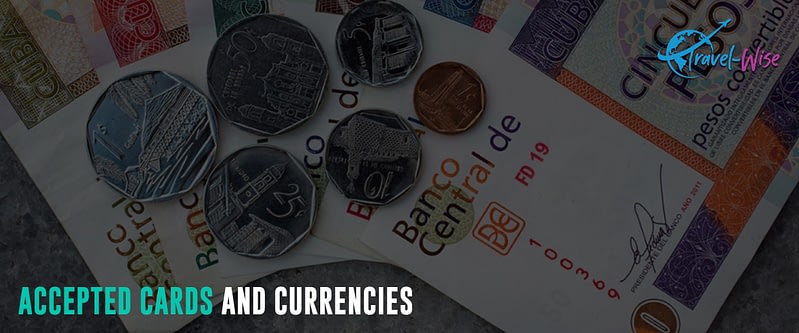
The acceptable debit and credit cards in Cuba are Visa, Mastercard, Union Pay, Ocean Card, CABAL, American International Service (AIS), and MIR. However, no card issued by US institutions works in Cuba. Thus, check and verify beforehand whether your card is associated with a US banking institution or if you will be able to use the card in Cuban territory.
Cuba is a cash society; card payments are usually accepted only in large hotels and shops. Hence, it is always best to have access to emergency cash for that ‘just in case’ scenario. As a tip to travelers, only exchange foreign currencies from Exchange Houses called CADECA. And before reaching airport security checkpoints, remember to spend or exchange your remaining Cuban Peso (CUP) for a foreign currency from CADECAs. Cuban pesos are not internationally convertible outside of Cuba.
Internet Connectivity

Internet connection in Cuba is not as efficient as in the US and European countries. The best way to stay connected while in Cuba is to purchase a mobile connection card service. It is available from the Enterprise of Telecommunications of Cuba S.A. (ETECSA), the Cuban government’s telecommunications office with branches nationwide. Visitors can use the login and password on the card to connect their phone or computer. Once they have their card, find a public wifi access location (mostly in parks and areas around ETECSA offices) where they can connect.
Most high-end hotels also offer internet connection cards and wifi at a hefty cost. Hence, purchasing the ETECSA internet connection cards can be a considerable saving.
Covid-19 Policy

All travelers to Cuba can enter the country without Covid-19 restrictions. But note that face masks are still mandatory at all points of entry to Cuba.
The Covid-19 protocol of Cuba may vary over time with the evolution of the pandemic. Therefore, check Cuba’s latest Covid-19 entry requirements through the D’Viajeros portal when planning your trip.
Travel Insurance

Valid travel and health insurance that covers medical treatment, including Covid-19, repatriation, and evacuation, are mandatory to enter Cuba. Travelers who don’t have proof of health insurance, or if the evidence presented doesn’t satisfy the Cuban immigration authorities, may have to purchase health insurance from a Cuban insurance company ASISTUR S.A. upon arrival.
Travel insurance can protect travelers against the inconvenience of injury, medical emergencies, theft, and flight cancellations. In addition, it is a comprehensive protection in case anything goes wrong with your trip.
Visa Information
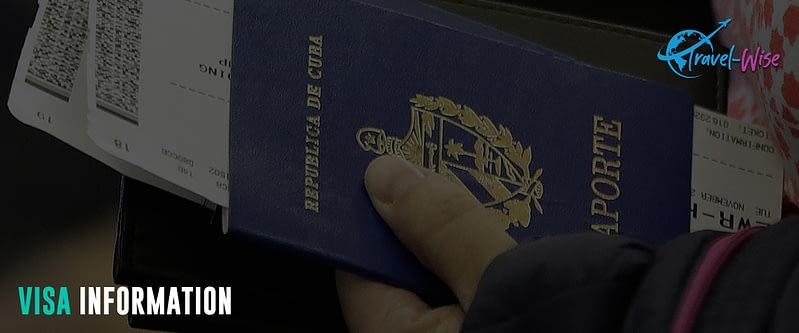
Citizens from 19 countries can visit Cuba without a visa and can stay from 28 days to 90 days. Other nationals must obtain a visa or a tourist card from one of the Cuban Consulates or diplomatic missions, travel agencies, or authorized airlines. Generally, airlines flying to Cuba include the cost of the tourist card in the ticket. Additionally, all visitors to Cuba must have a return or onward plane ticket and a valid passport for at least six months.
For US citizens, travel to Cuba for ordinary tourist activities remains prohibited by the state. They must only choose from one of the US government-approved categories. Hence, travelers must check the travel requirements and visas that suit their purpose.
Arrival Form
An electronic form called D’Viajeros facilitates and improves travelers’ experience on their trip to Cuba. It replaces the paper forms (immigration, customs, and health) usually handed out to passengers by the airlines during their flights. Travelers can fill out the form within 72 hours before their flight. Successful registration will generate a QR, which will be presented along with the passport upon arrival. Travelers who need to change the form must fill it out again.
Popular Attractions
Cuba delights travelers with a wide variety of attractions. From the enticing powdery white sand beaches, eclectic architecture, rich historical sites, tropical rhythms, and lush forests, Cuba has become a favorite Caribbean destination for travelers worldwide.
Old Havana (Habana Vieja)
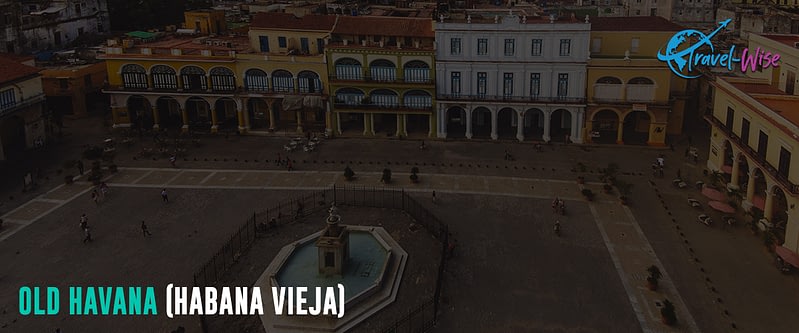
Old Havana, also known as Habana Vieja, is a UNESCO World Heritage Site that offers a well-preserved glimpse into Cuban history. Wandering through its cobbled streets will transport visitors back 200 years, surrounded by grand Baroque and neoclassical buildings.
Significant attractions include Plaza de la Catedral, the Cuban Baroque Catedral de San Cristobal, the iconic restaurant Bodeguita del Medio favored by Hemingway, and the military fortress Castillo de la Real Fuerza. Another gem in the Old Town is the vibrant Plaza Vieja and the notable building of Casa del Conde Jaruco from the 18th century, showcasing exquisite stained-glass windows on its first floor. Adjacent, the camera obscura offers visitors incredible views from its 35-meter tower. A day is recommended to thoroughly explore the Old Town, with the option to extend if time allows.
Varadero
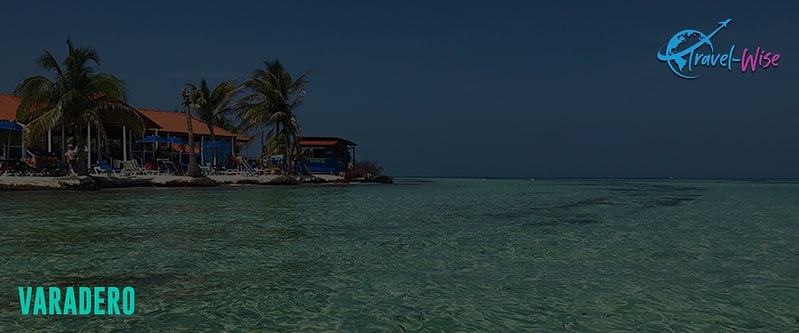
Varadero, one of Cuba’s renowned beach destinations, boasts a 20-kilometer stunning Caribbean coastline along the Peninsula de Hicacos. Linked to the mainland by a drawbridge, it boasts more than 50 hotels along its palm-fringed shoreline, attracting global visitors with its powdery white sand beaches and crystal clear waters.
From all-inclusive resorts to charming casas particulares, diverse accommodations cater to every traveler. Families relish the safe, shallow shores, while nightlife enthusiasts dance the night away at Casa de la Música or themed parties at hotels.
Notable attractions in Varadero include the Varadero Ecological Park encompassing Parque Ecológico Varahicacos and its caves: Cueva de Ambrosio and Cueva de Musulmanes. The serene Parque Josone also adds to the charm, with lush gardens, a restaurant, a swimming pool, and a small lake for row boating.
Parque Nacional Viñales (Valle de Viñales)
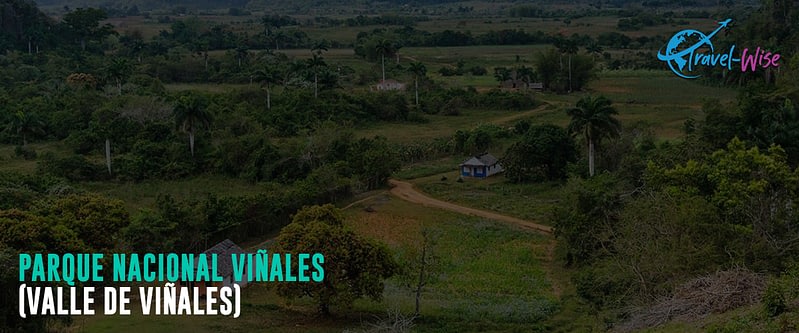
Parque Nacional Viñales, a UNESCO World Heritage Site, is a stunning valley of steep mogotes in Sierra de los Organos in Pinar del Rio province. Visitors can expect captivating landscapes, diverse terrain, extensive water systems, mineral-rich caves, and historic prehistoric human and animal rock paintings. The valley’s mural of prehistoric figures and animals, a vivid depiction on a 120-meter-high steep rock, adds to its allure.
The valley floors serve as agricultural zones for tobacco, fruit, and vegetable cultivation. For outdoor enthusiasts, the park offers exceptional cycling, hiking, and horseback riding opportunities in the hills with views of Los Acuáticos and Valle del Palmarito. Don’t miss the chance to explore Gran Caverna Santo Tomás, Cuba’s most extensive cave system. Nearby, the charming town of Viñales acts as a convenient base for exploration, with friendly locals coordinating various activities.
Parque Historico Militar, Havana
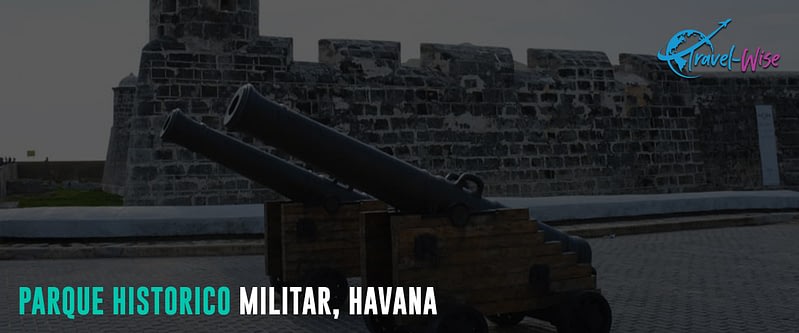
The Parque Historico Militar is arguably the most formidable defensive complex in Spain’s colonial empire. It forms part of the Habana Vieja UNESCO World Heritage Site and encompasses two of Havana’s renowned fortresses: Castillo de los Tres Reyes del Morro (El Morro) and Fortaleza de San Carlos de la Cabana (La Cabaña).
Both structures served the purpose of safeguarding Cuba’s city center from enemy fleets and pirates. Despite their different construction times, they have become famous historical landmarks intertwined with significant events in Cuba’s history.
Castillo de los Tres Reyes del Morro
The Castillo de los Tres Reyes del Morro, also known as El Morro, is a remarkably preserved Spanish fortress. It dates back to the late 16th and early 17th centuries as protection against pirates and as a prison in the late 1700s before reverting to its fortification role. The fort is situated at the Bay of Santiago’s entrance, around 10 kilometers southwest of Santiago de Cuba, and offers a captivating historical experience.
Exploring the various fort levels provides insights into its rich history. The small museum delves into pirate tales and the fort’s story, while the panoramic views over the bay are awe-inspiring. While its historic lighthouse was replaced with a stone in the 19th century, its original lamp continues to shine out to sea. Ascending to the fort’s summit rewards you with breathtaking ocean and city views.
Fortaleza de San Carlos de la Cabana
Just a short walk away, Fortaleza de San Carlos de la Cabana was erected in the 1770s to bolster the defenses of El Morro. Commonly referred to as La Cabaña, this imposing fortress complex stands as the third-largest in the Americas, situated on an elevated eastern hillside overlooking Havana Harbor alongside Morro Castle.
During the Barista regime, La Cabaña had a historical role as a military prison and later housing Che Guevara’s headquarters post-Revolution. Delve into the museums to uncover the fort’s captivating history, with a highlight being the nightly Ceremonia del Cañonazo. An engaging experience, actors dressed in 19th-century attire perform a cannon-firing ceremony over the harbor every 9 p.m.
Restored and open to visitors, La Cabaña offers an array of attractions. The complex includes bars, restaurants, souvenir shops, and a cigar store holding the world’s longest cigar. Notably, it houses the Museo de Fortificaciones y Armas and the intriguing Museo de Comandancia del Che.
Trinidad
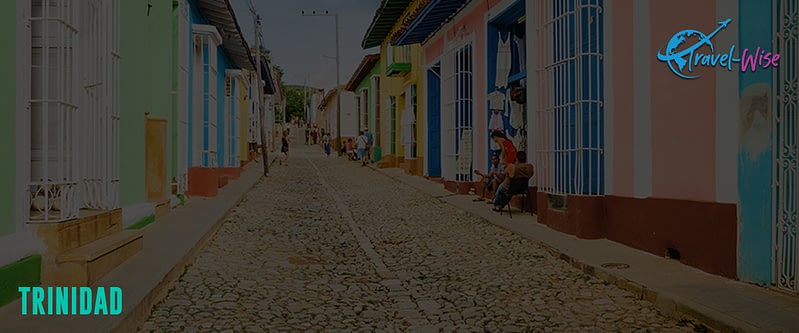
Trinidad, a UNESCO World Heritage Site since 1988 designated a World Craft City in 2018, is a unique destination characterized by its cobblestone streets and colonial mansions. Dubbed Cuba’s best-preserved “open-air museum,” it’s also renowned for its exceptional handmade crafts. Skilled local needleworkers display their creations at open-air markets, showcasing delicately embroidered tablecloths, clothing, and traditional garments like guayaberas.
When exploring Trinidad, you’re transported to a bygone era. The meticulously restored architecture and cobblestone streets create a colonial atmosphere. From the 17th to the 19th centuries, these buildings hark back to Trinidad’s history of sugar and enslaved person trading prosperity.
The city’s vibrant ambiance comes alive in the cobblestone Plaza Mayor, the central square. Overlooking the courtyard stands the neoclassical Church of the Holy Trinity (Iglesia Parroquial de la Santisima Trinidad).
Noteworthy attractions in Trinidad include the Church and Monastery of Saint Francis (Iglesia y Convento de San Francisco), famed for its distinctive bell tower. The Museum of Colonial Architecture (Museo de Arquitectura Colonial), the art gallery at Casa de Aldeman Ortiz, and the Palacio Brunet, a grand 1812 residence with original frescoes and marble floors, are also must-visits.
Heading east towards Sancti Spiritus, the lush Valle de los Ingenios, a UNESCO World Heritage-listed site, holds remnants and monuments from the 19th-century sugar cane boom. A delightful Trinidad activity is driving or horseback riding through the scenic expanse of green sugar cane fields, mountains, and palm trees.
Playa Paraiso, Cayo Largo del Sur
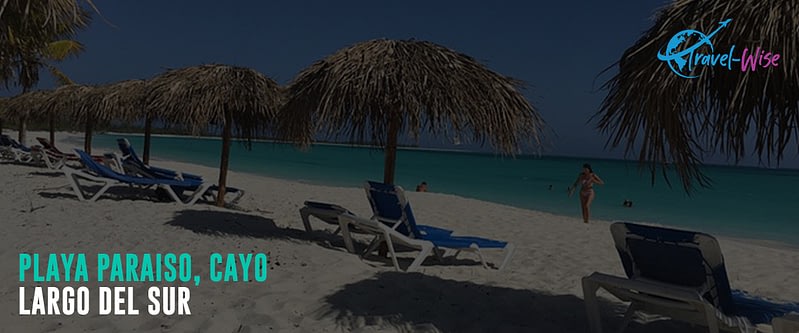
Playa Paraíso (Paradise Beach) on Cayo Largo del Sur lives up to its name with powdery white sands and turquoise waters. This pristine beach connects with Playa Sirena, offering a peaceful retreat. Relax on the sand, swim in the clear blue sea, and enjoy nearby restaurants. Consider staying at Hotel Sol Cayo Largo or Hotel Pelican. A stroll from Playa Sirena unveils Playa Paraíso’s beauty and leads to Punta Mal Tiempo, a photographic gem. As part of Cayo Largo’s western beaches, it remains unspoiled, offering essential services to tourists.
Baracoa
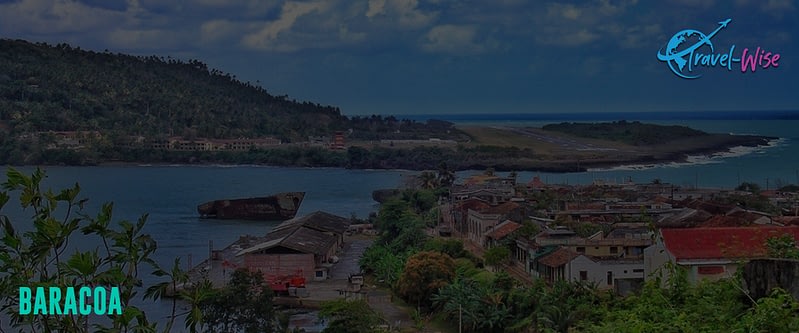
Baracoa, Cuba’s oldest city in Guantanamo province, captivates with colonial charm and lush landscapes. Founded in 1511, it retains a remote charm, having been relatively isolated until the construction of the La Farola highway in the 1960s.
Visitors are drawn to Baracoa for its colonial architecture, lush landscapes, waterfalls, and picturesque beaches. El Yunque Peak invites hikers to a UNESCO Biosphere Reserve. Drive La Farola highway for stunning views, visit Museo Municipal, and unwind at Playa Maguana. Wildlife enthusiasts find paradise here, with Río Duaba, El Yunque, and Parque Nacional Alejandro de Humboldt offering rich flora and birdlife. Experience the captivating journey to Baracoa via the scenic La Farola road.
Malecon Promenade
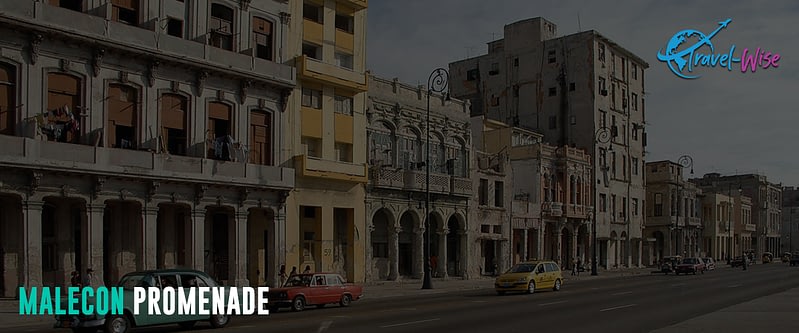
The Malecon stands as Havana’s renowned seafront promenade. It features well-preserved 20th-century buildings with diverse architectural styles like Art Deco and Neo Moorish. The promenade extends seven kilometers from the Habana Vieja quarter to Vedado, the central business district, and offers a picturesque journey through the city’s history. Aside from housing several significant monuments, the iconic Malecon Promenade hosts the annual February carnivals.
Many experienced travelers suggest that the Malecon is best experienced at sunset. Notably, the promenade’s proximity to the water means it can get flooded during windy weather.
Primary Spoken Language(s)
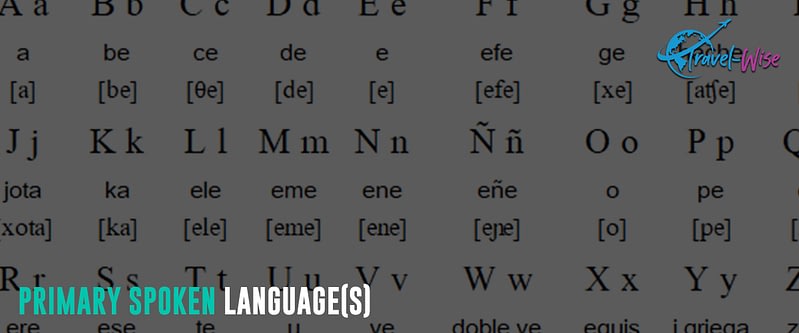
Spanish or Cuba Spanish, a form of Caribbean Spanish, is Cuba’s official and widely spoken language. Haitian Creole, spoken by Haitian immigrants, is the second-most spoken language in Cuba.
Also, many Cubans in larger cities and tourist areas speak fluent English as it is a mandatory subject in school. However, expect it to be less talked away from tourist areas.
Safety Concerns
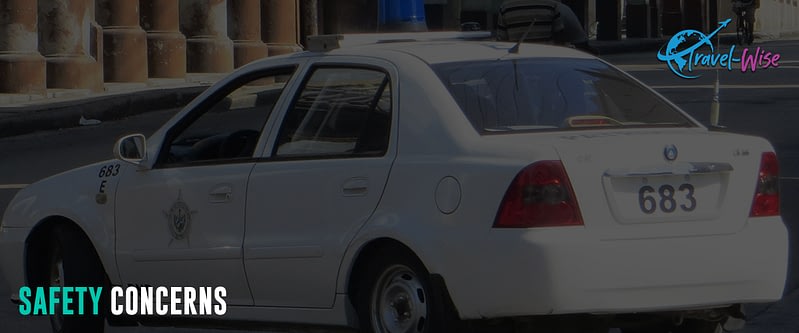
Cuba ranks 98th out of 163 countries on the 2022 Global Peace Index. Also, Cuba has a Level 2 Travel Advisory from the US Department of State. Hence, travelers to Cuba should exercise precautions when exploring the country.
The common crimes that affect tourists in Cuba are petty thefts like pickpocketing, bag snatching, and car break-ins. These usually happen in crowded areas, airports, public transport, and the beach. Hence, always keep an eye on your belongings. Do not leave unattended valuables and display large amounts of cash. Carry money in your front pockets, securely hold your bags and phones, and be mindful of purses or bags when dining out.
There are also an increased number of crime of opportunity in Cuba. So, be careful of unregistered taxis and bogus tour agents operating at the airports and around Havana. Only take a registered and marked taxi—lastly, only exchange currencies at the state-run offices known as CADECAs or official banks.
For emergency services in Cuba, dial 104 for an ambulance, 105 for fire, and 106 for police.
Natural Hazard
Like its neighboring Caribbean countries, Cuba is prone to hurricanes from August to October. Hence, travelers to the country should reconsider when planning to visit Cuba during these periods. Additionally, monitor alerts and advice from the US National Hurricane Center, Caribbean Disaster Emergency Response Agency, and local authorities.
Health Hazards
Cuba has a risk of mosquito-borne diseases such as dengue and chikungunya. The chances are higher during the wet season, from May to October. Thus, ensure your accommodation is insect and mosquito-proof. Use repellant, and wear light-color clothing.
Local Laws
Travelers must know that it is illegal to photograph military or police installations or personnel, harbor, rail, and airport facilities in Cuba. The government imposes severe penalties for offenders. Also, drivers involved in accidents that result in injury or death, regardless of fault, have severe penalties.
Budget Considerations
The Caribbean island country of Cuba attracts a vast crowd and is quite an affordable destination. Whether looking to relax, party, or splash out, Cuba has plenty of options for all types of travelers.
Accommodation
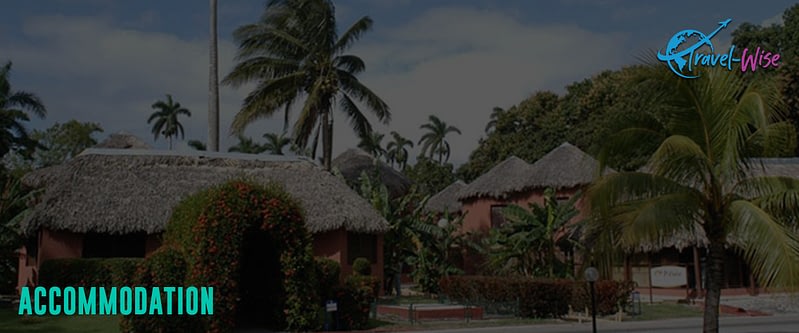
The accommodation cost in Cuba varies depending on the travel season and location. But generally, a bed in a hostel dorm in Havana starts at $6 and $16 for private rooms. Meanwhile, travelers can get a private hostel room for as low as $10 in Trinidad. Free wifi is standard, and most offer complimentary breakfast. In addition, travelers will find apartments and holiday homes between $50 and $160.
Depending on the location, visitors can enjoy the comfort of a three-star hotel for $50. They can also splash out on five-star hotels for $90 and all-inclusive beach resorts for $170.
Food
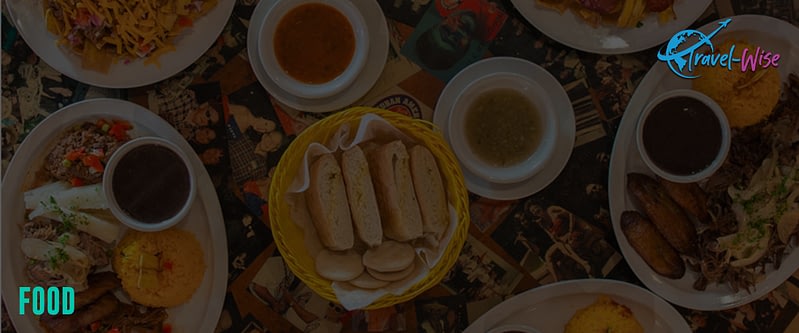
Cuban cuisine combines Spanish, African, aboriginal, Yucatecan, and Asian traditions. Fresh marine and farm products are abundant, and the typical national dish is rice, black beans, salad of the season, roast pork, and fried plantains. Popular dishes include Ajiaco, Casabe, Buñuelos, Tamales, Tostones, roasted pork, and the Congrí.
A regular meal at an inexpensive restaurant costs around $7, while a fast food combo meal costs $5.30. Travelers who want to splash out on meals can have a three-course meal at a mid-range restaurant for $15. Expect food prices to be higher in the beach and tourist areas.
On the other hand, visitors who want to cook can spend $45 per week on groceries. It includes basic staples like pasta, rice, seasonal produce, and meat or seafood.
Attractions and Transportation

Cuba’s most sought-after white powdery sand beaches are generally open to the public, while admission to museums and historical sites ranges between $2 and $6.
For budget travelers, public transportation in Cuba is affordable. For example, a single bus ticket starts at $0.20, while the initial taxi fare is $1 with $0.50 per kilometer increments. As most taxis do not have meters, always check it with the driver and negotiate the price before you take off. Also, remember to take only registered and marked taxis.
Average Two-week Cost
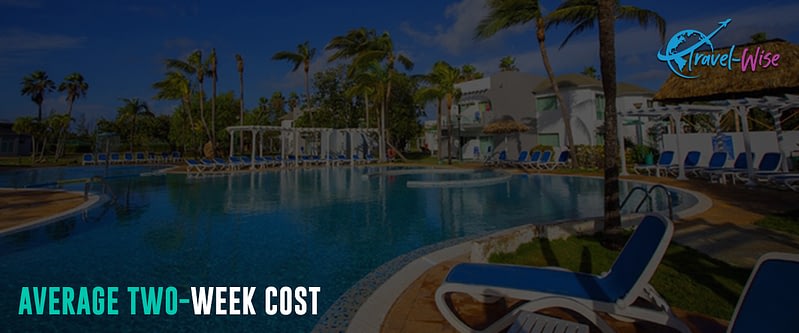
Budget travelers in Cuba can live with a $40 daily budget or $560 for two weeks. The budget covers the costs of sleeping in hostel dorm beds; grocery shopping and cooking your food; taking public transport; and mainly doing free activities at the beach.
Meanwhile, mid-range travelers spend at least $100 daily or $1400 for two weeks. It includes staying in a three-star hotel, taking occasional taxis, and dining in local restaurants. Mid-range travelers can also do a few paid activities and visit several destinations.
Lastly, travelers can enjoy luxury and privacy in Cuba for $200 daily or $2400 for two weeks. It includes staying in five-star hotels or all-inclusive resorts, splashing out on meals, taking domestic flights, and renting a car for transport. They can also avail of all the paid tours and activities they want. So for them, the sky is the limit for travel.
Customs And Import Restrictions
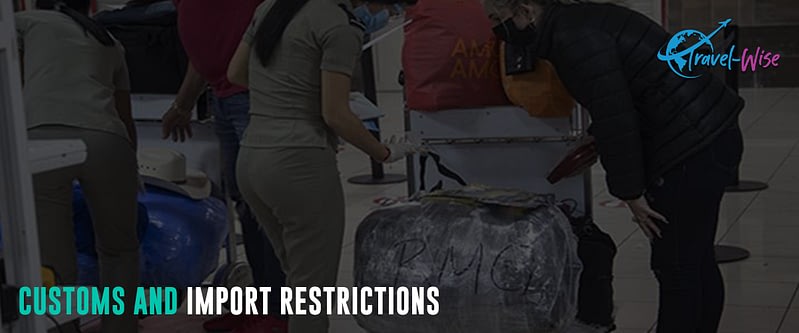
Travelers to Cuba can bring tax-free imports, including personal effects, clothes, computers, mobile phones, and sports equipment. In addition, travelers can also get tax-free imports as follows:
- Gifts up to the value of 1000 CUP ($41)
- Up to 10kg of pharmaceutical drugs.
- Wheelchairs, books, musical scores, educational records, tapes, motion pictures, prostheses, and equipment or materials for blind people.
Note that tax-free imports must be on separate luggage from the taxable goods and items. The importation of foreign currency is also unrestricted in Cuba. However, visitors carrying over $5000 or equivalent in other currency must declare it to customs upon arrival.
On the other hand, the Customs Laws of the Cuban Republic forbid the entry of the following:
- Drugs and narcotics.
- Psychotropic or hallucinogenic substances.
- Precursor substances.
- Explosives.
- Blood products.
- Literature, articles, obscene objects or pornographic, or anything that violates the general interests of the nation.
- Products of animal origin that are susceptible to being carriers of diseases.
When planning your trip, visit the Cuban Customs portal or the Manual D’Viajeros for the complete customs and import restrictions list.
Climate Considerations
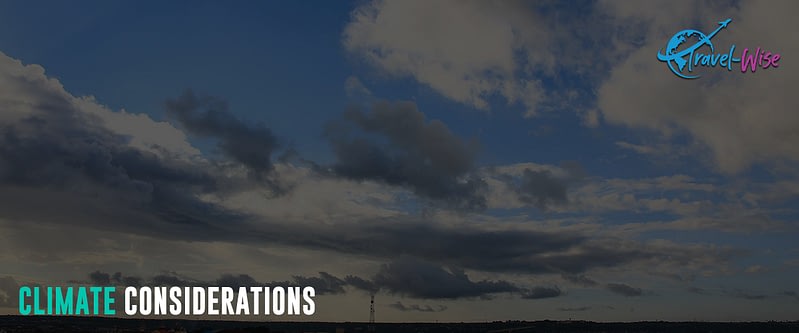
Cuba enjoys a tropical climate characterized by two specific seasons. Firstly, the wet season brings more rain and heat from May to October, with temperatures between 22 ºC and 32 ºC. Secondly, Cuba enjoys dry seasons between November and April, with temperatures ranging from 18 ºC to 27 ºC.
The water temperature in Cuba is pleasant at around 24 ºC and 29 ºC throughout the year. However, avoiding traveling during the hurricane season between August and October is best.
Primary Transportation Options
As an island country in the northern Caribbean, at the entrance to the Gulf of Mexico, Cuba is only accessible by air and sea. While the capital city of Cuba has diverse transport service options, outside Havana relies mainly on the bus services of Viazul.
Air
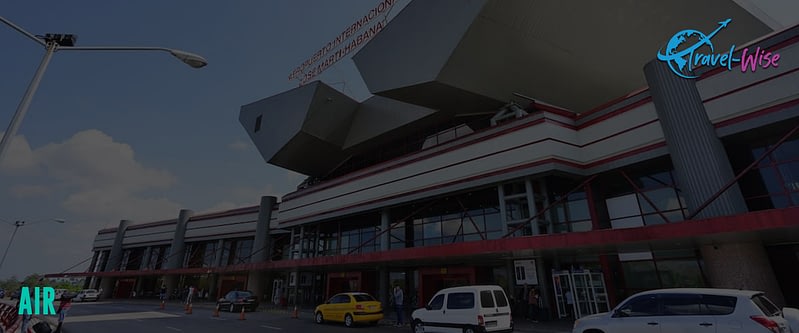
Cuba is connected to the world with its ten international airports. The country also has 15 domestic airports strategically located in tourist destinations throughout the archipelago. José Martí International Airport in Havana is the primary aviation hub, and the country’s flag carrier is Cubana de Aviación, commonly known as Cubana. Another locally-based airline operating in Cuba is Aerogaviota.
Sea

Cuba has four cruise terminals that cater to cruise ships, ferries, and cargo vessels worldwide. These are located in Havana (Avenida del Puerto), Cienfuegos (Calle La Mar), Isla de la Juventud (Punta Francés), and Santiago de Cuba (Jesús Menéndez Avenue).
In addition, Cuba has 15 international marinas or strategic points in tourist destinations accommodating medium and small boats dock with views of nautical events and activities of interest to the visitor.
Trains
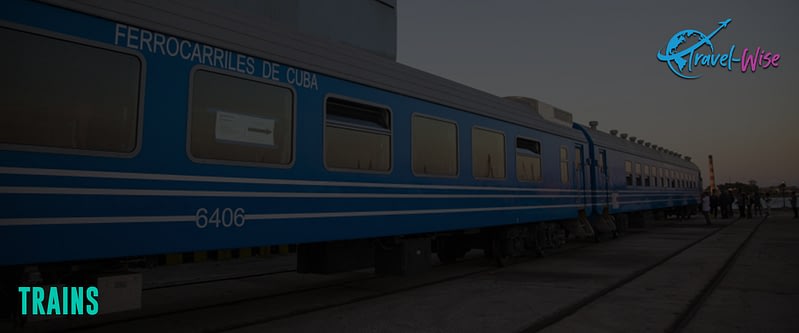
Cuba’s rail network is comprehensive, connecting most of the island. However, the service is unreliable, slow, and limited to Cuban nationals.
Buses
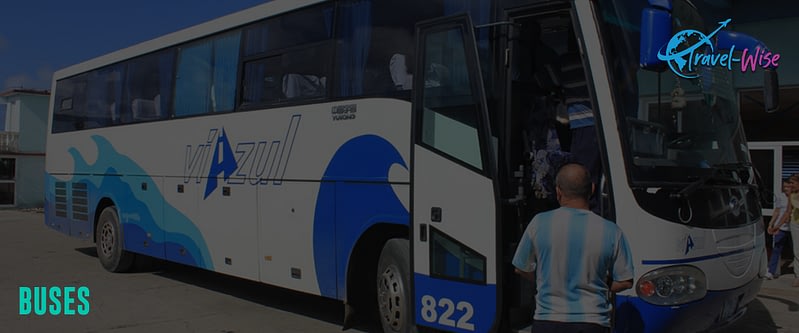
Bus service providers are abundant in the capital city of Havana. While public buses in Cuba are cheap at $0.20 for a single ticket, they are generally overcrowded. Hence, beware of pickpocket incidents as they are frequent in crowded public transport.
Outside the city limits, buses are scarce, poorly maintained, with mostly unreliable service. Viazul is the most reliable transport service outside the city limits.
One of the best tourist options is a bus service between airports and all-inclusive resorts. Tour operators also organize day trips and use buses in good condition.
Taxis
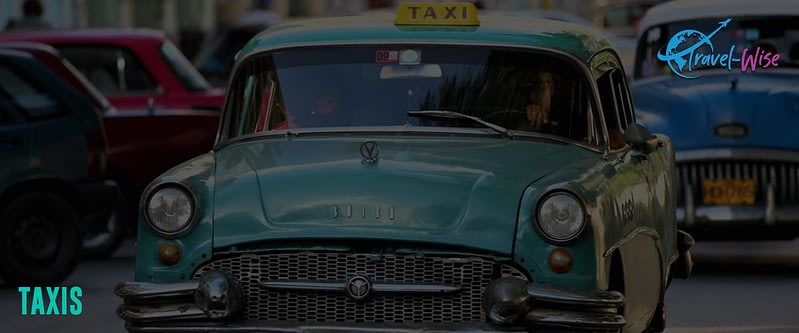
Registered and marked taxis are generally reliable, with the yellow taxis being government-run. Taxi fares start at $1 and an increment of $0.50 for every kilometer. As most taxis don’t have meters or “broken,” remember to negotiate the price before getting in.
A cheaper taxi option is riding the “Colectivo” or collective cab. These are taxis or cars shared with other passengers, collecting and dropping along the way. However, remember the safety risk it may bring when sharing a ride with strangers in a foreign country.
Another popular public transport service in Cuba is coco-taxis. These are motorcycles with a yellow coconut-shaped cover.
Lastly, visitors can ride bici-taxis to explore Old Havana. These are typically rickshaw-like bicycles.
Car Rental
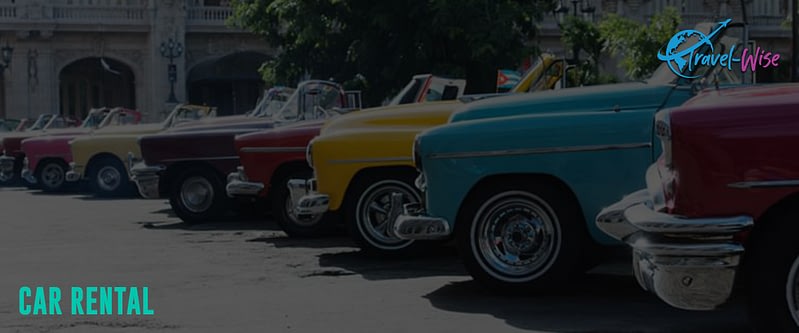
There are many local car rental companies to choose from in Cuba. Depending on the car type and model, the rate starts at $50. In addition, travelers must also pay for car insurance between $20 and $40, fuel cost, and driver.
However, the road conditions outside urban areas are narrow, and some are in bad conditions. In addition, road signage on highways may be lacking or confusing.
Start Trip Planning
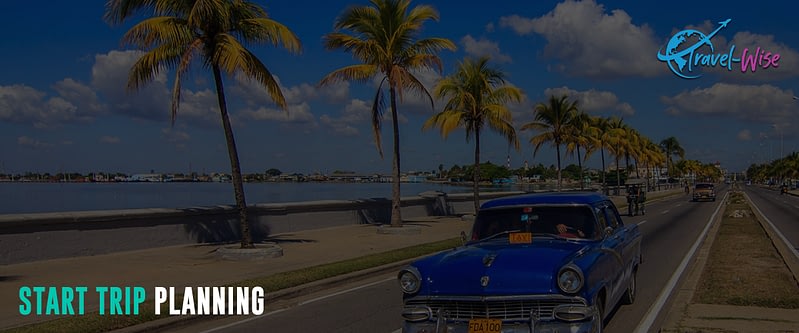
Travel-Wise is made from the ground up to help people travel more, break down the barriers that make it tough to get going, and start your journey as painlessly as possible. Bookmark our other Country Guides to help kick-start your research for future travels. We also offer templated itineraries from our staff and community that help serve as a building block for your trip plans. Alternatively, we also utilize AI to offer a way to generate itinerary ideas. This saves much time just getting you up and running with a template. From there, you can use the trip planner to create your customized itinerary, invite friends and family for collaboration, find others from Travel-Wise to join the trip, book and track important information, journal, and share your experiences at the end or along the way!

